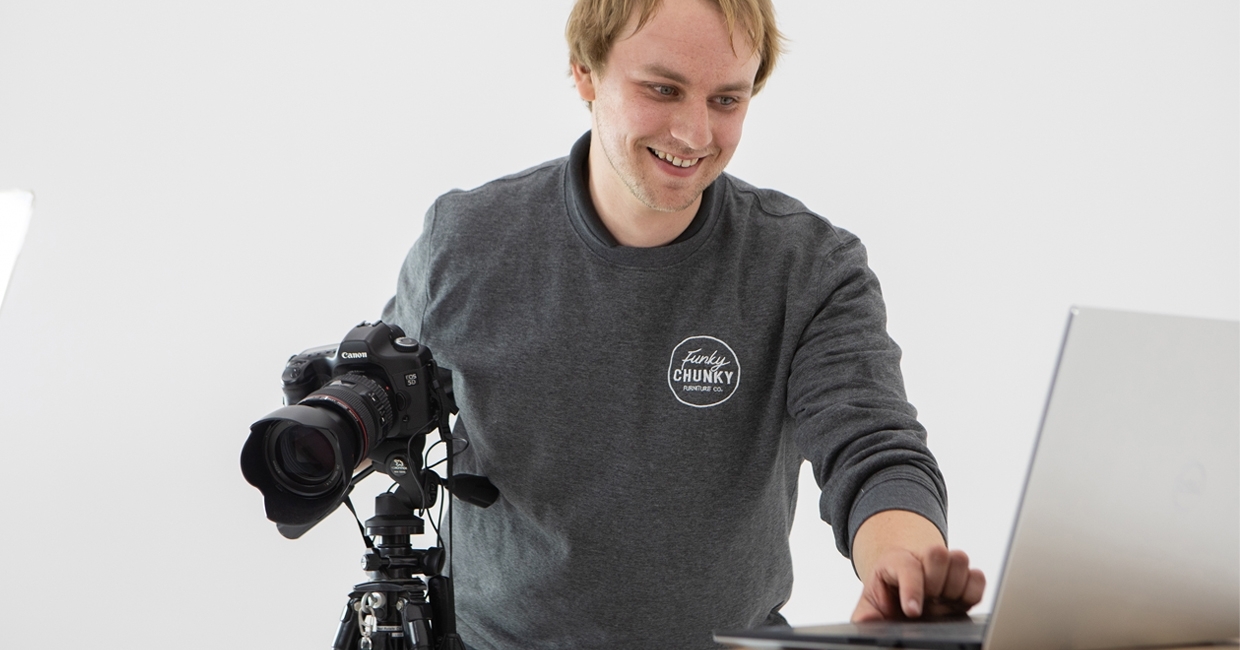With a turnover in excess of £4m, Jarrow-based handmade furniture- and shelf-manufacturer Funky Chunky Furniture is expanding fast. Recently, the business turned to virtual reality (VR) technology to revamp its workshop, maximising output while reducing costs, and allowing production to flow seamlessly, says operations director James Brand …
What prompted you to explore the application of VR in your business?
The business had grown rapidly, and we had seemingly maxed out the available space within our workshop. So, we knew the layout needed changing.
Our main aims were to ensure our manufacturing was as efficient as possible, make the best use of available space, and respond to the varying needs of the different manufacturing processes. We worked with the Sustainable Advanced Manufacturing (SAM) Project on addressing these issues, and it was their suggestion that we use VR to model the workshop.
How might you have approached a fresh factory layout otherwise?
Before we started working with SAM we did actually have an alternative layout for the workshop in mind. It was what we felt would be best use of the available space within the building, and also the best workflow for the team. It was interesting to see how our initial idea was remodelled and refined by the VR software.
Did your tech partner have any previous furniture industry experience?
As a rapidly growing manufacturing business, we needed to seek the advice of industry specialists. The SAM team’s expertise lies in the broader manufacturing sector, and it was this experience we wanted to tap into.
Can you provide some examples of how the findings directly improved efficiency?
As a result of the project we have changed the layout of the workshop and it has created real improvements, both in efficiencies and opportunities. We’ve seen a +30% efficiency gain on our shelving manufacturing, and the layout change has meant that we have gained space within our existing floorplan, enabling us to introduce new processes and expand existing workflow.
There was an emphasis within the project on creating distinct teams within the workshop, which would focus on specific product areas. This in itself has helped with efficiencies, as the team members’ familiarity with particular product types mean the manufacturing times decrease.
Did any real surprises/unexpected challenges arise during the process?
We started out with an idea of what we could potentially do to the workshop to improve efficiencies, and used the software to model the workflows.
In a way, the biggest challenge was the data! We weren’t expecting so much useable data from the modelling. So, once we knew how much detail it would provide we could really drill down and try out quite a few different scenarios. It took us quite a long time to get it right.
We knew that changing the workflows and manufacturing would free up some space within the workshop, but the real surprise was just how much space we had! We’ve created space that we’ve still not used yet, and it’s going to enable us to expand our range and introduce new product lines, processes and finishes.
Can you see any further possible applications for VR in your business?
We’re growing rapidly, and at this stage we’re really not sure what our expansion is going to look like. Whatever route we take, we’ll definitely be looking to use VR again to model our workshop.
From a marketing perspective, VR opens up so many avenues for consumer engagement. We’ll be looking to build on our digital presence in the next year or so, and the introduction of technologies that will allow us to create an immersive experience for our consumers is really exciting, and definitely top of our marketing wishlist.








